乔·拜登和贺锦丽赢得了历史性的胜利。
新冠疫情尚未散去,2020年种种动荡也仍然在持续,加州参议员贺锦丽最终当选了美国副总统。她将是担任美国副总统的第一位黑人女性、第一位南亚裔/亚裔美国女性,也是第一位登上美国政坛第二把交椅的女性。
但她并不是第一个吃螃蟹的人,她胜利的基础是长期以来女性为领导美国付出的艰苦努力。从象征性参与竞选到作为严肃候选人竞选公职,种种做法都推动了早期美国女性参政。
以下列举的女性都曾经为副总统贺锦丽铺平道路。
维多利亚·伍德胡尔
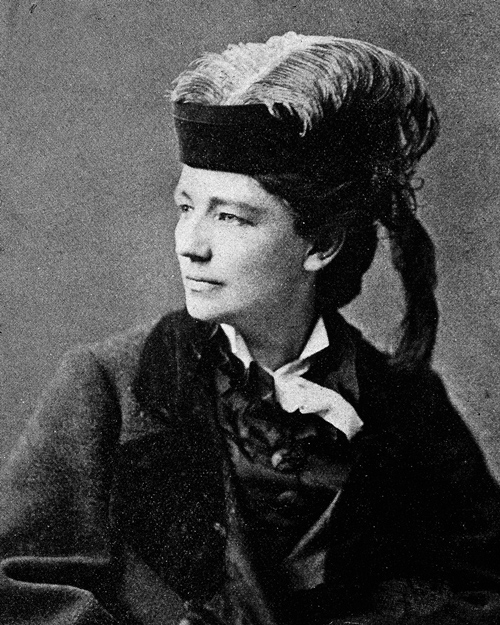
1872年,报纸出版商、华尔街经纪人、女性参政的激进主张者维多利亚·伍德胡尔竞选美国总统。她是第一位竞选总统的女性,而且比女性获得投票权早了半个世纪。
当年伍德胡尔33岁,没有达到当总统的法定年龄要求,这也是除了性别之外她与时任总统尤利西斯·格兰特竞争时面临的另一障碍。伍德胡尔是那个年代的名人,代表的党派是平等权利党,还提名废奴主义者弗雷德里克·道格拉斯为副总统。
道格拉斯从未承认提名,伍德胡尔也没有认真竞选。
贝尔瓦·洛克伍德
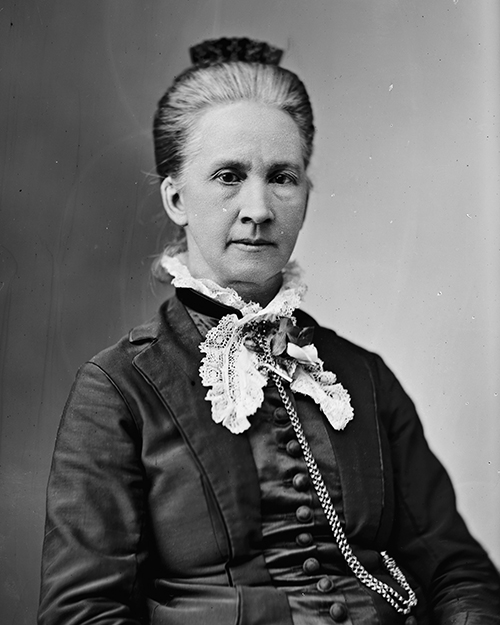
1884年,律师贝尔瓦·洛克伍德再次指出法律禁止女性投票存在明显漏洞,因为“法律中并无条文禁止女性被投票”。
加州报纸老板玛丽埃塔·斯托提名洛克伍德代表平等权利党竞选总统。斯托也加入洛克伍德共同竞选,两人获得了美国男性选民1000万选票中的5000票。
夏洛塔·巴斯
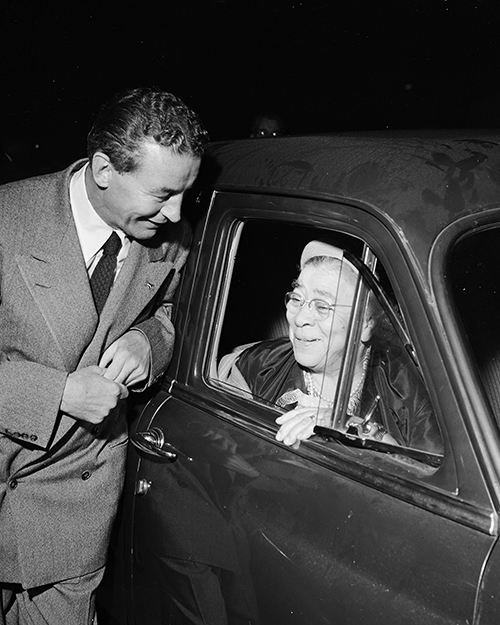
1952年,夏洛塔·巴斯对共和党和民主党都很“失望”,因为两党对女性和黑人的权利都不够关注。
当时巴斯是黑人报纸《加州鹰报》(California Eagle)的老板,代表进步党加入了文森特·哈利南的竞选,成为第一位黑人女性副总统候选人。两位进步派人士的竞选对手是艾森豪威尔-尼克松组合。
玛格丽特·蔡斯·史密斯
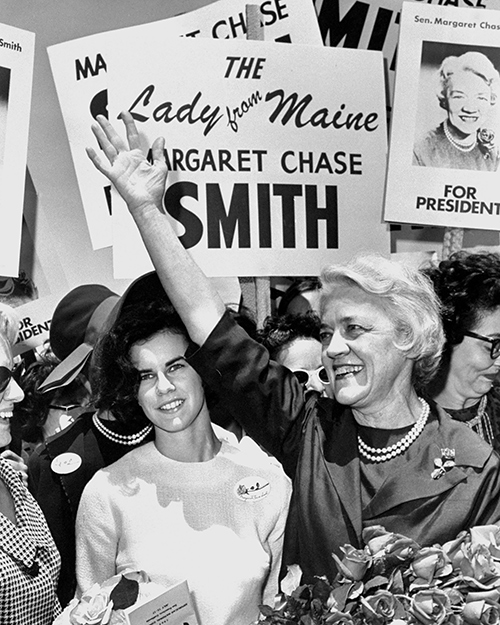
玛格丽特·蔡斯·史密斯创下了数个第一。身为共和党政治家,她是第一位当选众议员的女性、第一位当选参议员的女性,也是出席共和党全国代表大会的第一位女性,“由此获得多数党提名参与大选”。
1964年大选中,缅因州参议员史密斯输给了巴里·戈德沃特。
谈到竞选美国总统时,史密斯说:“我没有什么幻想,也没有钱,但我会坚持到底。如果有人一直说你做不到什么事,就有点想试试。”
雪莉·奇泽姆
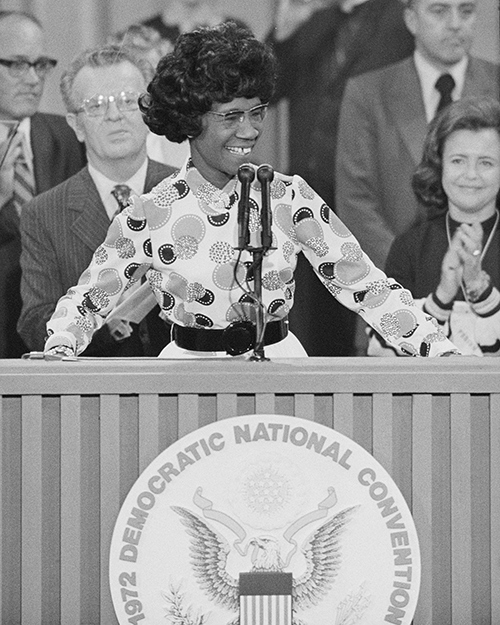
众议员雪莉·奇泽姆1972年竞选总统,也经常被称为在政治上为黑人妇女开辟道路的标志。
当时她是纽约州女议员,是1969年入选国会的第一位黑人女性,也是国会黑人核心小组和全国女性政治核心小组的创始成员。1972年她争取民主党提名时,竞选口号是“不被收买也不受指使”。当年最终由参议员乔治·麦戈文获得提名。
帕齐·明克

在同一竞选周期内,夏威夷众议员帕齐·明克发起了另一场总统竞选活动。
1959年,明克是第一位当选国会议员的有色人种妇女,也是第一位亚裔。俄勒冈州民主党人邀请她参选,以引起人们对反越战运动的关注,因此她参加了民主党总统初选投票。
她说,竞选的理念是“人道主义”,在俄勒冈州赢得了2%的选票,她结束竞选后在其他州还继续赢得选票。
弗朗西丝·法伦托尔德
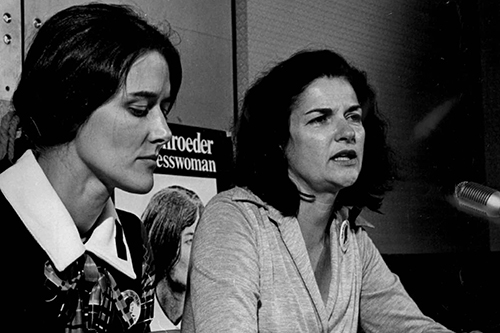
1972年是女性向上攀登里程碑式的一年。
在1972年民主党全国代表大会上,女权主义领袖格洛丽亚·斯坦尼姆提名当年的得克萨斯州民主党州长候选人,弗朗西丝·法伦托尔德则与乔治·麦戈文搭档竞选副总统。法伦托尔德是严肃的竞选者,但提名期间输给了密苏里州参议员托马斯·伊格尔顿(伊格尔顿后来输给了萨金特·施赖弗)。
勒唐纳·哈里斯
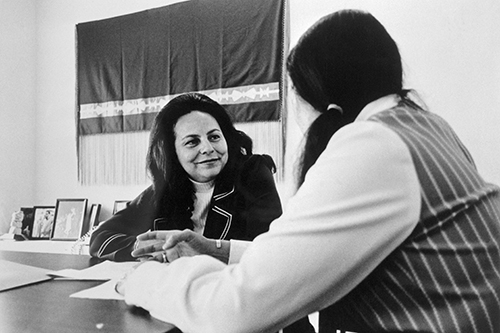
1980年,维权人士勒唐纳·哈里斯代表公民党,与总统候选人巴里·科蒙纳合作竞选副总统。
她是科曼奇族,也是第一位竞选副总统的美国印第安女性。哈里斯以倡导环保和关注美国原住民的工作闻名,她与丈夫,俄克拉荷马州参议员弗雷德·哈里斯住在华盛顿特区。
安杰拉・戴维斯

安吉拉·戴维斯不仅是有影响力的作家、活动家和学者,还曾经在1980年和1984年担任美国共产党副总统候选人,搭档是该党总统候选人格斯·霍尔。
杰罗丁·费拉罗

杰罗丁·费拉罗是1984年沃尔特·蒙代尔竞选时选择的副总统,也打破了重要的玻璃天花板,因为她是第一位被主要党派选为副总统的女性。
不过蒙代尔-费拉罗搭档争取民主党提名时输给了罗纳德·里根和乔治·H·W·布什,未能入主白宫。
卡罗尔·莫斯利·布劳恩

1993年,卡罗尔·莫斯利·布劳恩成为第一位在参议院任职的黑人女性,2016年贺锦丽进入参议院时也仅是第二位。
然而,正是因为莫斯利·布劳恩2004年参与总统竞选活动,才会进入本名单。她退出竞选后选择支持霍华德·迪恩,但最终赢得民主党提名的是约翰·克里。
莎拉·佩林

2008年,参议员麦凯恩选择阿拉斯加州州长莎拉·佩林为竞选伙伴,震惊了政界。这一选择也打破了24年前费拉罗触及的玻璃天花板,只不过这次是在对手党派。佩林是共和党总统候选人名单上第一位女性。
卡莉·菲奥莉娜
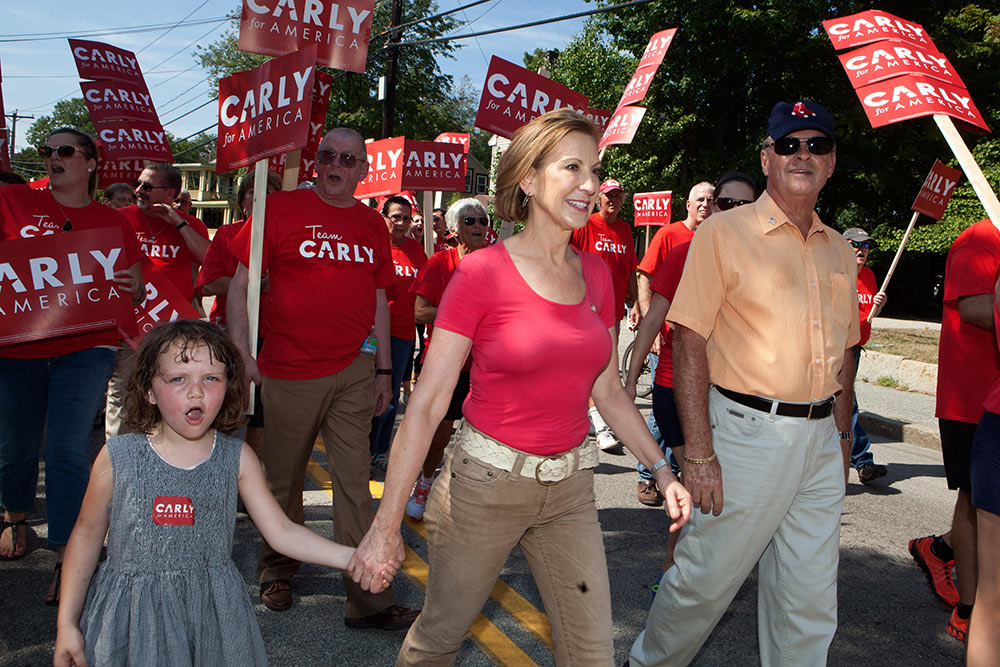
卡莉·菲奥莉娜是女商人,也是惠普公司的前首席执行官。
2016年她为争取共和党总统候选人提名展开了竞选活动,还在很短一段时间里成为参议员特德·克鲁兹的副总统人选。
希拉里·克林顿

希拉里·克林顿在2008年就曾经参加过总统竞选,最终于2016年被提名为民主党总统候选人,这是美国历史上女性“最高最坚硬的玻璃天花板”最接近打破的一次。
尽管希拉里赢得了全国民意支持,最后还是输给了特朗普,不过为今年民主党赢得大选奠定了基础。
2020年民主党初选候选人
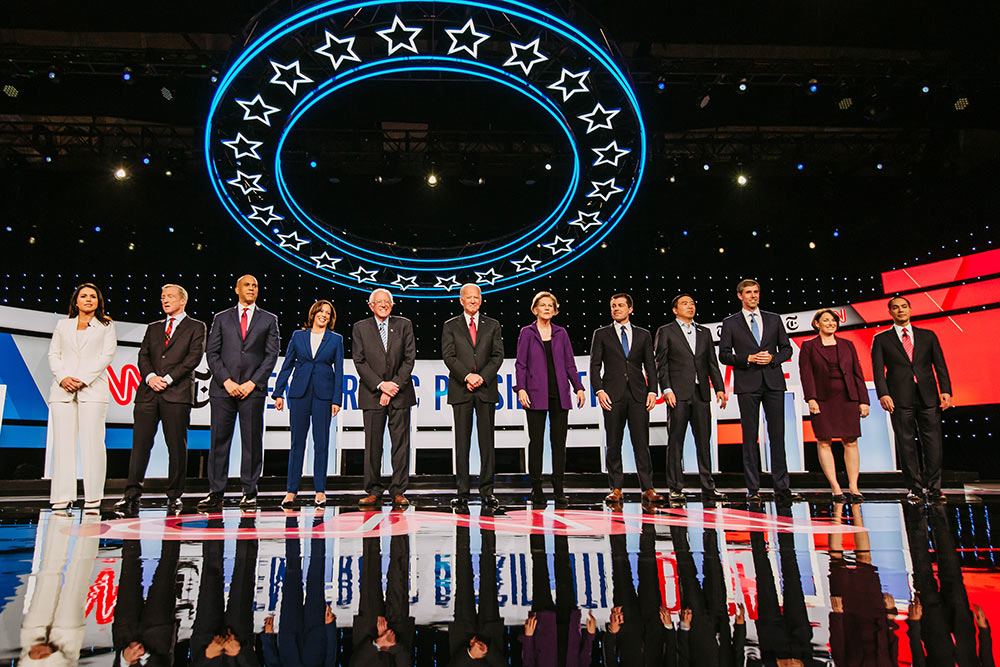
贺锦丽在成为乔·拜登的副总统候选人之前,也曾经是初选候选人一员,而今年女性人数创下历史新高。
2019年和2020年,贺锦丽与参议员伊丽莎白·沃伦、参议员艾米·克洛布查尔、参议员陆天娜、众议员图尔西·加巴德以及作家玛丽安·威廉姆森共同参选。
正因为有多位女性参与,拜登在民主党候选人中选择女性的承诺才完成得相当顺利,他最终选择了贺锦丽。(财富中文网)
译者:夏林
编辑:徐晓彤
乔·拜登和贺锦丽(Kamala Harris)赢得了历史性的胜利。
新冠疫情尚未散去,2020年种种动荡也仍然在持续,加州参议员贺锦丽最终当选了美国副总统。她将是担任美国副总统的第一位黑人女性、第一位南亚裔/亚裔美国女性,也是第一位登上美国政坛第二把交椅的女性。
但她并不是第一个吃螃蟹的人,她胜利的基础是长期以来女性为领导美国付出的艰苦努力。从象征性参与竞选到作为严肃候选人竞选公职,种种做法都推动了早期美国女性参政。
以下列举的女性都曾经为副总统贺锦丽铺平道路。
维多利亚·伍德胡尔
1872年,报纸出版商、华尔街经纪人、女性参政的激进主张者维多利亚·伍德胡尔竞选美国总统。她是第一位竞选总统的女性,而且比女性获得投票权早了半个世纪。
当年伍德胡尔33岁,没有达到当总统的法定年龄要求,这也是除了性别之外她与时任总统尤利西斯·格兰特竞争时面临的另一障碍。伍德胡尔是那个年代的名人,代表的党派是平等权利党,还提名废奴主义者弗雷德里克·道格拉斯为副总统。
道格拉斯从未承认提名,伍德胡尔也没有认真竞选。
贝尔瓦·洛克伍德
1884年,律师贝尔瓦·洛克伍德再次指出法律禁止女性投票存在明显漏洞,因为“法律中并无条文禁止女性被投票”。
加州报纸老板玛丽埃塔·斯托提名洛克伍德代表平等权利党竞选总统。斯托也加入洛克伍德共同竞选,两人获得了美国男性选民1000万选票中的5000票。
夏洛塔·巴斯
1952年,夏洛塔·巴斯对共和党和民主党都很“失望”,因为两党对女性和黑人的权利都不够关注。
当时巴斯是黑人报纸《加州鹰报》(California Eagle)的老板,代表进步党加入了文森特·哈利南的竞选,成为第一位黑人女性副总统候选人。两位进步派人士的竞选对手是艾森豪威尔-尼克松组合。
玛格丽特·蔡斯·史密斯
玛格丽特·蔡斯·史密斯创下了数个第一。身为共和党政治家,她是第一位当选众议员的女性、第一位当选参议员的女性,也是出席共和党全国代表大会的第一位女性,“由此获得多数党提名参与大选”。
1964年大选中,缅因州参议员史密斯输给了巴里·戈德沃特。
谈到竞选美国总统时,史密斯说:“我没有什么幻想,也没有钱,但我会坚持到底。如果有人一直说你做不到什么事,就有点想试试。”
雪莉·奇泽姆
众议员雪莉·奇泽姆1972年竞选总统,也经常被称为在政治上为黑人妇女开辟道路的标志。
当时她是纽约州女议员,是1969年入选国会的第一位黑人女性,也是国会黑人核心小组和全国女性政治核心小组的创始成员。1972年她争取民主党提名时,竞选口号是“不被收买也不受指使”。当年最终由参议员乔治·麦戈文获得提名。
帕齐·明克
在同一竞选周期内,夏威夷众议员帕齐·明克发起了另一场总统竞选活动。
1959年,明克是第一位当选国会议员的有色人种妇女,也是第一位亚裔。俄勒冈州民主党人邀请她参选,以引起人们对反越战运动的关注,因此她参加了民主党总统初选投票。
她说,竞选的理念是“人道主义”,在俄勒冈州赢得了2%的选票,她结束竞选后在其他州还继续赢得选票。
弗朗西丝·法伦托尔德
1972年是女性向上攀登里程碑式的一年。
在1972年民主党全国代表大会上,女权主义领袖格洛丽亚·斯坦尼姆提名当年的得克萨斯州民主党州长候选人,弗朗西丝·法伦托尔德则与乔治·麦戈文搭档竞选副总统。法伦托尔德是严肃的竞选者,但提名期间输给了密苏里州参议员托马斯·伊格尔顿(伊格尔顿后来输给了萨金特·施赖弗)。
勒唐纳·哈里斯
1980年,维权人士勒唐纳·哈里斯代表公民党,与总统候选人巴里·科蒙纳合作竞选副总统。
她是科曼奇族,也是第一位竞选副总统的美国印第安女性。哈里斯以倡导环保和关注美国原住民的工作闻名,她与丈夫,俄克拉荷马州参议员弗雷德·哈里斯住在华盛顿特区。
安杰拉・戴维斯
安吉拉·戴维斯不仅是有影响力的作家、活动家和学者,还曾经在1980年和1984年担任美国共产党副总统候选人,搭档是该党总统候选人格斯·霍尔。
杰罗丁·费拉罗
杰罗丁·费拉罗是1984年沃尔特·蒙代尔竞选时选择的副总统,也打破了重要的玻璃天花板,因为她是第一位被主要党派选为副总统的女性。
不过蒙代尔-费拉罗搭档争取民主党提名时输给了罗纳德·里根和乔治·H·W·布什,未能入主白宫。
卡罗尔·莫斯利·布劳恩
1993年,卡罗尔·莫斯利·布劳恩成为第一位在参议院任职的黑人女性,2016年贺锦丽进入参议院时也仅是第二位。
然而,正是因为莫斯利·布劳恩2004年参与总统竞选活动,才会进入本名单。她退出竞选后选择支持霍华德·迪恩,但最终赢得民主党提名的是约翰·克里。
莎拉·佩林
2008年,参议员麦凯恩选择阿拉斯加州州长莎拉·佩林为竞选伙伴,震惊了政界。这一选择也打破了24年前费拉罗触及的玻璃天花板,只不过这次是在对手党派。佩林是共和党总统候选人名单上第一位女性。
卡莉·菲奥莉娜
卡莉·菲奥莉娜是女商人,也是惠普公司的前首席执行官。
2016年她为争取共和党总统候选人提名展开了竞选活动,还在很短一段时间里成为参议员特德·克鲁兹的副总统人选。
希拉里·克林顿
希拉里·克林顿在2008年就曾经参加过总统竞选,最终于2016年被提名为民主党总统候选人,这是美国历史上女性“最高最坚硬的玻璃天花板”最接近打破的一次。
尽管希拉里赢得了全国民意支持,最后还是输给了特朗普,不过为今年民主党赢得大选奠定了基础。
2020年民主党初选候选人
贺锦丽在成为乔·拜登的副总统候选人之前,也曾经是初选候选人一员,而今年女性人数创下历史新高。
2019年和2020年,贺锦丽与参议员伊丽莎白·沃伦、参议员艾米·克洛布查尔、参议员陆天娜、众议员图尔西·加巴德以及作家玛丽安·威廉姆森共同参选。
正因为有多位女性参与,拜登在民主党候选人中选择女性的承诺才完成得相当顺利,他最终选择了贺锦丽。(财富中文网)
译者:夏林
编辑:徐晓彤
The victory of Joe Biden and Kamala Harris is history-making—for its arrival amid a pandemic, for the tumultuous nature of the 2020 contest, and for its Vice President–elect. Harris, the California senator, will be the first Black woman to serve as Vice President, the first South Asian– or Asian-American woman to fill the role, and the first woman to obtain the nation’s second-highest office.
But Harris isn’t the first to try. Her victory builds on a long history of women who fought for representation in U.S. leadership, from running for office as serious candidates to pursuing symbolic bids as a means of pushing for women’s political participation earlier in the country’s history.
These are the women who paved the way for Vice President Kamala Harris.
Victoria Woodhull
In 1872, newspaper publisher, Wall Street broker, and radical suffragist Victoria Woodhull ran for President—and was the first woman to do so, a half-century before women earned the right to vote. Then 33 years old, Woodhull wasn’t legally old enough to be President—a hurdle separate from her gender as she competed against incumbent President Ulysses S. Grant. A celebrity of her time, Woodhull ran on a ticket for the Equal Rights Party and nominated abolitionist Frederick Douglass as her Vice President. He never acknowledged the nomination, and Woodhull didn’t seriously campaign.
Belva Lockwood
In 1884, attorney Belva Lockwood again pointed out the apparent oversight in laws barring women from voting—that there was “no law against their being voted for.” California newspaper owner Marietta Stow nominated Lockwood to run for President, representing the National Equal Rights Party. Stow joined Lockwood’s ticket, and the pair campaigned for office—winning 5,000 out of American men’s 10 million votes cast.
Charlotta Bass
Charlotta Bass, in 1952, was “disappointed” in both the Republican and Democratic parties for their lack of attention to the rights of women and Black people. The owner of the Black newspaper the California Eagle, Bass joined Vincent Hallinan’s ticket through the Progressive Party and became the first Black woman to be a candidate for Vice President. The Progressive duo campaigned against the Eisenhower-Nixon ticket.
Margaret Chase Smith
Margaret Chase Smith accomplished several firsts: the Republican politician was the first woman elected to the House of Representatives, the first woman elected to the Senate, and the first woman, at the Republican National Convention, “to have her name put in for nomination for the presidency by a major political party.” The Maine senator’s 1964 run for President ended when she lost the GOP nomination to Barry Goldwater. Of her run for the nation’s highest office, Smith said: “I have few illusions and no money, but I’m staying for the finish. When people keep telling you, you can’t do a thing, you kind of like to try.”
Shirley Chisholm
Rep. Shirley Chisholm’s 1972 run for President is perhaps the campaign most often cited as breaking ground for Black women in politics. The New York congresswoman was the first Black woman elected to Congress in 1969 and was a founding member of the Congressional Black Caucus and the National Women’s Political Caucus. As she sought the Democratic nomination in 1972, her campaign slogan was “Unbought and Unbossed.” The nomination that year ultimately went to Sen. George McGovern.
Patsy Mink
In that same cycle, Hawaii Rep. Patsy Mink mounted another campaign for President. In 1959, Mink had been the first woman of color—and the first Asian-American woman—elected to Congress. She appeared on the Democratic presidential primary ballot after the Oregon Democrats invited the congresswoman to run to draw attention to the anti–Vietnam War movement. Mink ran a real campaign in the state, visiting often throughout the primary season; she said her campaign was based on the idea of “humanism.” Mink won 2% of the vote in Oregon and continued to earn votes in other states after she wrapped her campaign.
Frances ‘Sissy’ Farenthold
1972 was a milestone year for women seeking higher office. At the 1972 Democratic National Convention, feminist leader Gloria Steinem nominated the year’s Texas Democratic gubernatorial candidate, Frances “Sissy” Farenthold, as a candidate for Vice President on George McGovern’s ticket. Farenthold “was a serious contender but lost the nomination to Missouri Sen. Thomas Eagleton.” (Eagleton was later replaced with Sargent Shriver.)
LaDonna Harris
In 1980, activist LaDonna Harris served as the vice presidential nominee on the Citizens Party ticket alongside presidential nominee Barry Commoner. A member of the Comanche Nation, Harris was the first Native American woman to seek the position. Harris is known for her work advocating for environmental issues and for Indigenous people in Washington, D.C., where she spent time with her husband, Oklahoma Sen. Fred Harris.
Angela Davis
Not only an influential writer, activist, and academic, Angela Davis also ran as the Communist Party’s vice presidential nominee in both 1980 and 1984. She ran for office alongside the party’s presidential nominee Gus Hall.
Geraldine Ferraro
As Walter Mondale’s 1984 pick for Vice President, Geraldine Ferraro broke an important glass ceiling: She was the first woman chosen as VP on a major party ticket. The New York congresswoman didn’t make it to the White House after the Mondale-Ferraro Democratic ticket lost out to Ronald Reagan and George H.W. Bush.
Carol Moseley Braun
In 1993, Carol Moseley Braun became the first Black woman to serve in the Senate; when Kamala Harris was elected to the institution in 2016, she was only the second. It’s Moseley Braun’s 2004 campaign for President, however, that puts her on this list. After she dropped out of the race, Moseley Braun endorsed Howard Dean in a field that ultimately consolidated around Democratic nominee John Kerry.
Sarah Palin
Sen. John McCain shocked the political establishment when he chose Alaska Gov. Sarah Palin as his running mate in 2008. His choice broke the same glass ceiling that Ferraro had 24 years earlier, this time on the other side of the aisle. Palin was the first woman to appear on the Republican Party’s presidential ticket.
Carly Fiorina
Businesswoman and former Hewlett Packard CEO Carly Fiorina mounted her own campaign for the 2016 GOP presidential nomination—and for a short period of time served as the Vice Presidential pick for Sen. Ted Cruz on his own ticket that year.
Hillary Clinton
Hillary Clinton, through her 2008 campaign for President—and, finally, her 2016 nomination as the Democratic Party’s presidential candidate—came the closest to smashing the “highest, hardest glass ceiling” any woman had in American history. Her loss to President Donald Trump—although Clinton won the country’s popular vote—set the stage for this year’s contest.
2020 Democratic primary candidates
Before Kamala Harris was Joe Biden’s vice presidential pick, she was part of a primary field that included a record-breaking—and history-making—number of women. Harris, in 2019 and 2020, ran alongside Sen. Elizabeth Warren, Sen. Amy Klobuchar, Sen. Kirsten Gillibrand, Rep. Tulsi Gabbard, and author Marianne Williamson. That field paved the way for Biden’s promise to choose a woman as his partner on the Democratic ticket—and led him to Harris.






